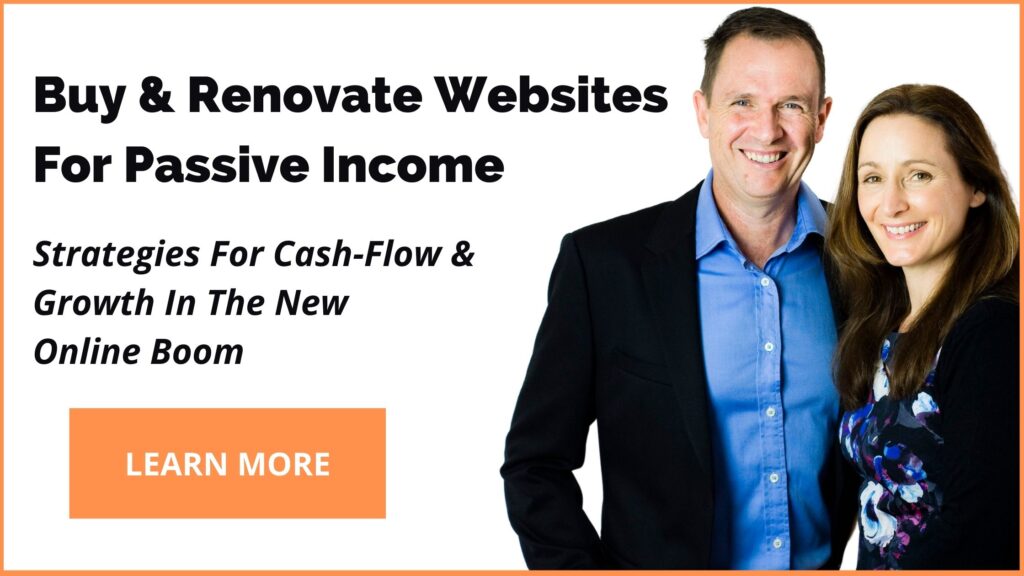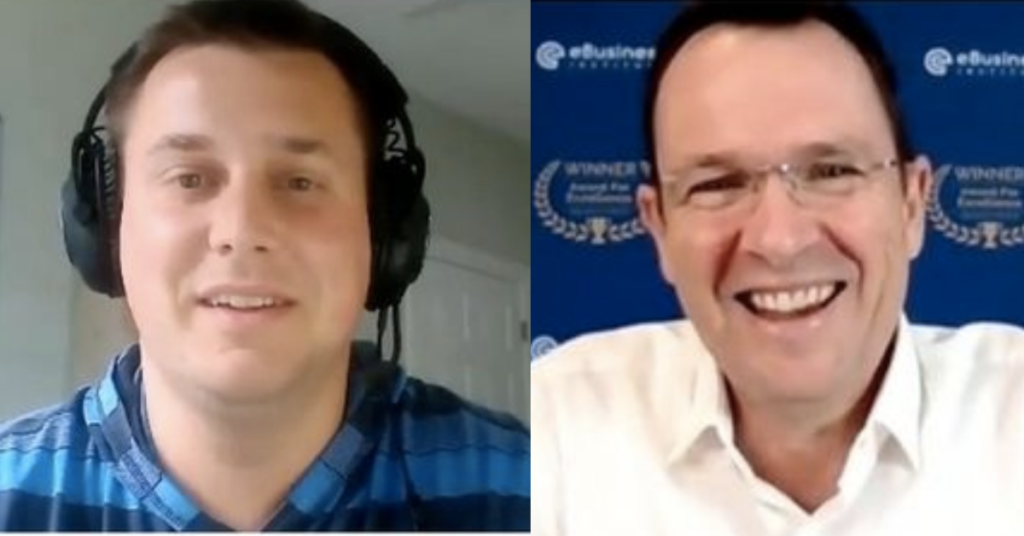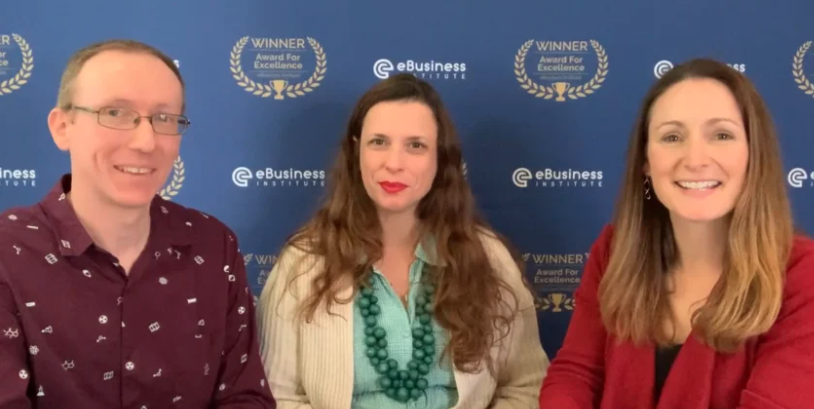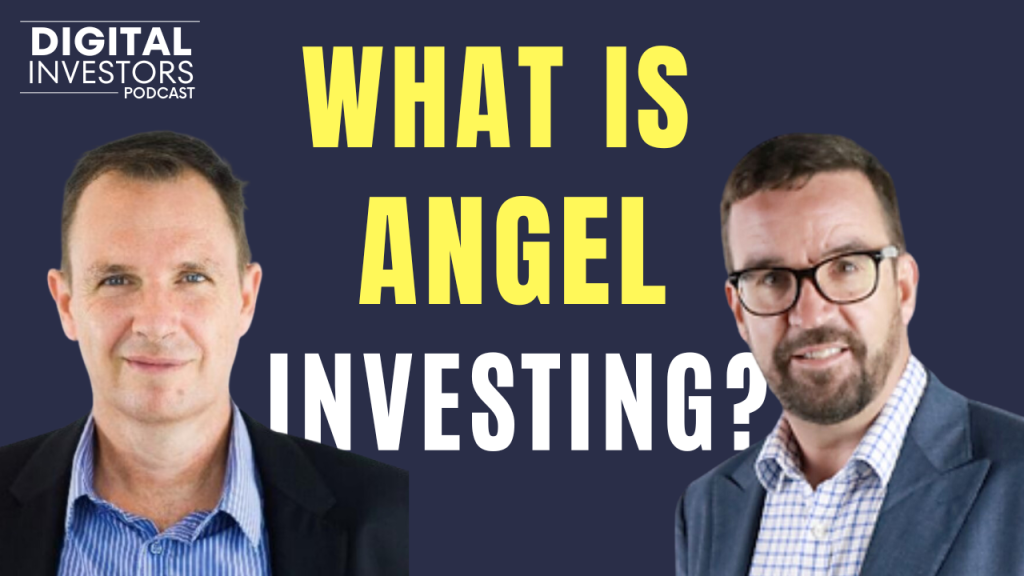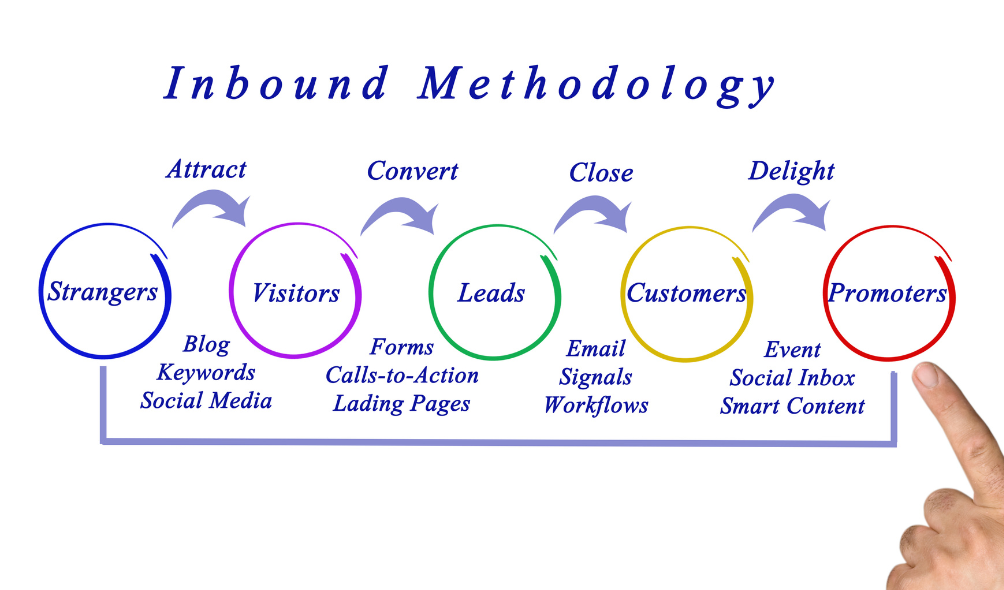Have you ever wondered if you can actually make serious money from building content websites?
Today we have a special guest join us, Ewen Finser from Venture 4th Media. Within 6 years, Ewen has built up a multi-million dollar portfolio. And today, he shows us the exact strategy he uses to build a website portfolio from scratch.
And I’ve got to say, Ewen’s strategy is a little unconventional. But it is working and has made him millions of dollars.
If you’ve been sitting on the fence, or unsure where to start when it comes to building content websites, then watch the video or read the transcript below.
Matt Raad: Hi, everyone. Today I’ve got a very special guest, Ewen Finser from Venture 4th Media. I’ve asked Ewen to chat to us all because he is building a significant portfolio of six and seven-figure websites.
And wait till you hear this – Ewen’s superpower is that he loves building sites. He is basically incubating them from the ground up. Ewen’s big on SEO as well. So thank you so much for coming along Ewen, and speaking to our community.
Ewen Finser: It’s great to be here. Thanks so much for including me.
Ewen Explains Why He Chooses Building Content Websites from Scratch
Matt: Let’s actually look at where you are now. I know you’ve been doing this for quite a few years, and we’ll touch on that later. Obviously, you’ve bought and sold quite a few websites. But now it seems you’re more into building them from scratch?
Ewen: It’s been an evolution. Just like many of your community, I started with limited capital, but I had some time and energy to put into it.
Back in 2013-2014, I built the sites myself. I started with one site, then did 2, 3, 4. I literally did all the functions from setting up the hosting, to doing some amateur web design, writing content, doing all the marketing around that, and link building, etc.
This has been evolving over the last 6-8 years into a more developed operation. Now we can hire writers and project managers; just like a C-suite at the top.
I always thought, “The reason why I’m building sites is because one day I can go buy them.” I tried that and had some success, and also some failures with purchasing websites. We can get back to that at some point.
But it all came back full circle to the idea of:
“Our team has this special approach to incubating sites. We have unique experience. What if we did that in a more organized and disciplined way? What if we approached that with the same rigor and discipline that we would an acquisition? But just do it from the ground up and do it at scale? And do it in batches?”
So, that’s where I’ve come to. Really, for me, it’s about competence and about risk mitigation. Those two things are why I focus on ground-ups as opposed to maybe acquisitions at a large scale.
Gaining Experience with Both Buying AND Building Content Websites
Matt: You and I were introduced through Joe Valley at Quiet Light Brokerage. One of the things that caught my attention was when Joe said to me, “Oh man, I’m working with this lovely guy, Ewen. You’ll get on really well with him. But wait till you hear how he does his SEO.”
That’s what really intrigued me, because we all love SEO and it’s been hugely successful for all of us. When talking to you as well, I realize you have gone on the same journey that a lot of people go on in our community, which is both building and buying websites.
In terms of the buying side, you’ve sold and bought some quite sizable websites, haven’t you?
Ewen: At the higher end, I’ve sold and acquired mid six and seven figure websites. So, I’ve been on both sides for sure. I’ve also done a lot of micro acquisitions, sub $50k; but I’ve seen the big ones and I’ve seen the ones in between. I’ll say, “Big ones” in air quotes because that’s from my experience. I think for a big media company, $1,000,000 is peanuts. But for me, it feels like a lot.
Matt: Yes, and all from working from home. So, since 2013, you’ve gone on this whole journey. You’ve had the experience from quite small sites to the bigger sites, and you’re building sites. This is very similar to Liz and I actually. That’s why it’s so fascinating to talk to someone like yourself, share ideas and swap notes.
How Ewen Leverages Systems When Building Content Websites from Scratch
Matt: But what I’m really interested in is why you have decided after all this time of doing both, that you have found that building sites is more your sweet spot. Do you want to mention why this preference?
Ewen: What we’ve realized from a competence point-of-view is that we have this system for sourcing writers, managing writers, even the software system. We’ve built an end-to-end “conveyor belt”. We call it the content conveyor belt, and so we have this unique superpower.
So, what’s the best way to leverage that? Well, I think right now with where multiples are, and the risks associated with acquisitions, we’ve said:
“The smaller the acquisition, the better. And if we can’t find it on the market (which is almost always the case), and we don’t find the right quality or size, then we’re going to incubate. We’re going to build it from scratch.” – Ewen Finser.
That’s really where we’ve focused on, because that’s where we can extract the most value versus a large acquisition.
Ewen: Sometimes when you’re buying a website for profit, let’s say with 300, 400, 500 pieces of content or more; what you’re really acquiring is a defensive playbook. Yes, there might be some growth opportunities, but you have to keep the ship sailing and keep the leaks plugged.
We’ve had experience with that. But I would say I’d rather be playing the other game. I’d rather be playing offense than defence, if that makes sense.

Ewen Shares His Method of Building Content Websites at Scale
STRATEGY: Fire Bullets then Cannonballs….
Matt: Yes. And so now, you’ve got the funding behind you and you are launching sites on mass. That’s basically your strategy?
Ewen: The interesting point here is that my experience up until 2017 was launching as many sites as I could. It was a bootstrapped entrepreneur lifestyle business. Maybe one month I needed to take it out for a down payment on a house etc. So, I’m kind of balancing out these different priorities.
Some months I’m reinvesting into existing sites, and other months I’m launching a bunch of new websites. It was really just based on what I was seeing, but in a very disorganized and undisciplined way. It worked, but at the end of the day, I couldn’t really understand what exactly was causing the growth. It was hard to follow.
What Is Fire Bullets then Cannonballs? when it comes to Building a Portfolio of Websites
Ewen: When I made the decision to go back to content (and really raise capital against that from outside investors), I really wanted to do it in a disciplined, measured way.
I read this book, Good To Great by Jim Collins, and all his other material. He’s a great thought leader. There’s a whole bunch of concepts I love, such as the 20 Mile March, and other ones that I really internalized with our team. But one of the ones I really hung on to was Fire Bullets then Cannonballs.
The idea is that if you have a reserve of capital (or energy or resources), you don’t want to expend all of that gunpowder on one big shot.
He uses the analogy where there’s two war ships at sea. One’s bearing down the other and you see the target, so you turn to face it. And then you have this choice:
- Do you fire all of your gunpowder at once and try to take them out?
- Or do you try to fire a tracing shot first?
You might use 10% or 5% of your ammo. Maybe you miss left, but then you adjust, and you miss right. But then you box your way in until you hit the target. Once you hit the other ship with the little grapeshot, then you say, “Okay, now we’ve hit metal. Now we fire with the big cannon ball.”
That’s the important distinction. It’s holding these two concepts that are seemingly opposed. But in balance, you’re doing this limited validation to really get on target. Then once you realize you’re on target, you’re firing everything you have at that target.
How to Use Fire Bullets Then Cannonballs when it comes to Building Content Websites at Scale
Ewen: That’s been my macro thesis in why I’m focused on doing content sites at scale. I think we’ve hit the target, so to speak. We just need to scale it with capital and content, and then do more sites. And so, what we try to do (even at the portfolio level), is follow this Fire Bullets then Cannonballs approach.
It’s very important for us to launch all of the sites at the exact same time, with the exact same capital input. They could be in different verticals, but each site gets $15,000 – $17,000 worth of content. Around 50% to 60% of our overall allocation goes into firing bullets, and we fire wide.
Step 1: Launch sites…Fast!
Ewen: For our last launch, we raised $800,000. We fired our bullets, being 26 sites launched in 5 weeks. For each site, we want to get over 120 articles published then then let them sit. Then we go into a period of rest and refit, where we’re not doing anything at all. We will do some basic outreach link building campaign through some social media, but it’s very basic.
Step 2: Let the Sites Mature over 12 Months
Ewen: We let all the sites sit for about 6-9 months. It’s like a vintage wine, you kind of let them mature. And then right around the 12-month mark, we start to see which of these sites (which of these assumptions that we put out there), are proving to be more interesting than others.
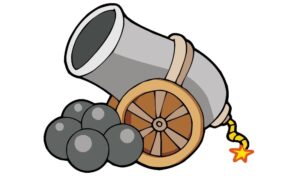
It’s really a gut check. I think I have the best ideas for new sites, but honestly, I don’t know. Even the best keyword research tools can’t really tell you the truth. They’re approximation, so you have to see what the market says (what Google says), about your sites.
Step 3: Then Double Down on the sites that are working
Ewen: And then we double down. We take the reserve gunpowder, if you will, and fire it back into the top 20%-40% of the sites. Whatever that percentage is, we double down on the ones that have proven to us that they’re worth doubling down on.
So, it’s really a pathfinding exercise more than it is a necessarily an exercise in scale. We want to figure out where to go first, and then double down on that. That’s a little bit about the overview of our process and why we do what we do.
Does Building Content Websites at Scale Really Work??
Matt: So that works for you. Compared to you, I’m an old time SEO-er. And I was saying to Joe Valley, “Wow, that’s not even how we teach it.”
We teach that you need to drip feed the content over time onto the site to make it look natural. I’m sounding old here; but in my day, putting all your content onto a site in one hit was a no-no. That’s because it’s just not how normal sites were built back then.
I’ve been asking around since I heard of this idea. It seems like this is a whole new thing that people are talking about. People like yourself are finding that you can now stick all your content onto a website in one hit. This is absolutely fantastic for time management, because it makes it a lot easier to put 120 articles onto a content site.
Why Ewen Chooses the Strategy of Building Content Websites at Scale:
#1 – You Can Fully Optimize Your Conveyor Belt
Matt: There’s more work than meets the eye behind that, especially when you’re across 25 websites. So, it’s a fantastically effective way of doing it, if it works really well. And obviously, that’s what your team are geared up to do.
Ewen: Yes. We’re all optimized around this conveyor belt. We have various different companies and funds that are also in launch phase. We plan it all out on the calendar.
Every year, we try to do one or two of these launches. That’s the plan moving forward. It keeps the gears moving and helps us to keep improving in the feedback loop, which allows us to refine the process every time. In theory, I think in business (and life in general), someone says, “Get in the arena.” It’s about getting repetitions done.
#2 – Gain The Feedback Needed to Properly Test and Measure Your Results
Ewen: For us, we want to get as many repetitions in as quickly as we can in a measured way. That way, we can understand cause and effect. Because maybe if you just fired a site per month, you get caught up in it… You’d have to be balancing its time and what’s the better investment? Well, is it because it’s older? Is it because it’s been around longer?
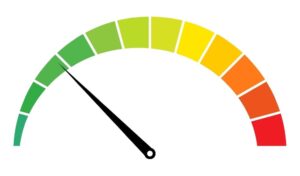
And so, you might get caught in a scenario where you don’t really know what’s working. Or even if it is working, you’re not sure why. That’s why we do the cohort analysis.
Matt: Yeah. That’s fantastic. It’s funny, in our community everyone knows I have a saying that I’ve got from Arnold Schwarzenegger, which is, “Reps, reps, reps.” You’ve always got to do the reps, and that’s been a big success principle for Liz and I.
What I want to point out to our audience is that Ewen has obviously done the reps, reps, reps over the years. He’s very successful already with buying and selling websites. And you all heard that he learned how to build his websites first.
The Important of High Quality Articles when Building Affiliate Websites for Profit
Matt: Ewen, I’m presuming with your experience that these articles are very high-quality articles. For the SEO, you’re doing really good titles, subtitles etc. So, these are not your average type of written articles that you typically see on cheaper websites for sale?
Ewen: Another part of our secret recipe, (well, it’s not a secret, it’s more of a consistency thing), is we spend a lot of time sourcing our writers upfront and finding really high-quality experts.
You might hear this thing with Google, EAT (Expert, Authority, Trust). We want to feature our writers. We’re not about putting up anonymous content, or ordering content from some service provider. We own the content.
Content is the product and it’s very important for us to make that the priority. At the end of the day, that’s the only thing I care about in terms of the QA process. Are we producing high-quality content? Regardless of whether it’s video or written content.
We follow the best SEO practices, the title tags, etc. But ultimately, what we’re optimizing for is serving the user. And I know that’s a little bit esoteric and a lot of people say that. But that’s what we think about. We always think about what we should be optimizing for.
#1 – Short-Term SEO Tricks Don’t Work
Ewen: I think there’s a lot of short-term SEO tactics out there that are the flavour of the month, and people are successful with them. But I think what we try to align for, rather than trying to stay up to date with the latest, “Oh, include this snippet or that snippet, or this title tag or not.” Instead, we try to say, “Okay, we see where Google is trying to go,” even if they’re not necessarily explicit or they’re opaque or hard to understand.
We say, “Let’s optimize for the future that they’re aiming for, which is high quality, expert written content from passionate people that are in the space.” And so, we’re biased towards hiring passionate, experienced, writers as opposed to professional copywriters. In fact, we’d rather not have a copywriter because they’re coming from a different background that’s not really relevant to the niches we enter.
#2 – Your Website Evolves into a Content BRAND
Matt: And to confirm Ewen, these are not complex sites? These are your standard affiliate or content sites, aren’t they? You’ve got advertising, affiliate on them in your standard niches that we all go into when we’re online.
Ewen: One thing that I’ve changed my mind about recently, is that we think about our sites as content brands, not content sites. It’s a subtle distinction, but I think when you’re looking for a problem to be solved, you don’t necessarily want to know that you’ve landed on an “Affiliate” site. As a reader, you want to feel like you’ve landed on the go-to resource for this vertical that you’re passionate about.
Yes, we use affiliate CPA offers. We do a lot of that. We have a whole monetization team that we’ve built out. We’re building relationships with these brands, which is great, but we’re also doing display ads. We’re doing programmatic. And we’ve recently started doing direct placements of boutique advertising with brands.
We’re really working with the brands to figure out what they want, but doing it in a way that’s very natural. And I’d like to say, if you visit any of our sites, you’d say, “Oh, this is an interesting hobbyist site, or an interesting enthusiast site about this topic.” It’s not necessarily the Wirecutter – which is a great site, and they do an amazing job. But we’re not trying to be a reviews.com.
We’re trying to be an authoritative community of experts around this area. Whether it’s product reviews or informational tutorial content (or video), we try to take a holistic approach to it.

Ewen Shares How He Finds His Favourite Online Niches
Matt: And are you happy to share some of the typical niches that you might go into? Or how you find the niches?
Ewen: Of all the things we do, this is the thing I enjoy the most. I love looking at trends – macro trends, micro trends. I enjoy looking at the keyword research, advertising trends, and finding the gaps in the market.
I’d say that’s the thing that is not scalable on purpose, because you can’t really outsource the inspiration for a business or for a site. I think that has to be something that’s closely held and developed by the CEO, the founder, the Chief Operator.
How To Analyse a Niche when Building Content Websites
Ewen: There’s a couple of things I riff on and I find these thematic things in the market. There’re certain pockets of content. I’m trying to give a good example – maybe three years ago, you could say it was pets. Pets was a good niche a couple of years ago. You could into that space, and there wasn’t a whole lot of good information.
So it’s thinking about that; all the different types of pets you can own, all the different pain points etc. I like thinking about it at different levels and different microscope zooms:
- There’s the thematic content zoom. What is this niche about?
- And then there’s also the monetization layer. How could you monetize it?
- And then there’s the sub-specialization. With pets, you can think of it as a generalist pet site that covers A to Z, everything about pets.
Should You Target a Specific Niche or go Broad?
Ewen: Then you can break it into pet insurance. You can say, “We can create a site just about pet insurance.” That’s a big enough market that you could target, or you can talk about cats, you could talk about dogs. You could go down breeds-specific sites that are geared just towards Corgis or Labradoodles, whatever it is, and create content just around that.
You could focus on pet food. I think there’s a big site called Pet Food Advisor, very successful. You can focus on pet gear, pet furniture etc. It’s breaking it apart and really dissecting the market and finding those little entry points. Those subtle, slight edges, where with topical focus, you can outswing a lot of these big well-established players.
You’ll find with a lot of the big media companies, they’re going broad. To someone like Dotdash, a big US company; what’s niche to them (e.g., Liquor.com) is very different. They think that’s a cute niche brand. To me, scotch.com or bourbon.com is fairly broad.
So, I think as operators we’re focusing in on a niche. Not like an exact-match domain, but rather as a focused area. That’s one way I look at it.
How To Look for Changes in Online Trends
Ewen: I also look at what I call late-stage e-commerce adoption. In other words, what are the markets that are just coming online now? A good example of this now you can order (at least the US), lumber or wood for building a house. You can order that online now. There’s direct-to-consumer lumber. And that wasn’t a thing three or four years ago.
It’s looking at the things that are just now starting to realize that e-comm growth hockey stick. It’s maybe shying away from some of the things that are overdone, and focusing on the ones that are just coming out.
A good example is actually wine and spirits. A couple of years ago, it was very hard, at least in the US, because of all the legal restrictions involved.
Matt: Yes, same here in Australia.
Ewen: And so that’s opening up. It’s changing, and that’s an interesting market. So, I try to look at things like that too.
Matt: In essence, you’re picking everyday niches that are in front of us all the time. And it can even be micro niches.
Ewen: Yes, and there’s maybe some tactical things around the size and the keyword volume etc. I focus more on what’s the basket of topics you could go after, versus individual keywords etc.
But I generally like to see a few hundred searches per month, at least. Ideally for the head terms, the main categories are over a 1,000. That’s just a little rule of thumb if you’re trying to narrow it down.
Matt: Perfect.
Do You Need Technical Experience When Building Content Websites?
Matt: So, for people reading this, thinking, “Wow, you’re building these massive big sites now.” When you look back over your journey – tell us a picture, what’s your background, Ewen? What did you do originally, and how did you get into this?
Ewen: I guess my background was desperation! Like so many other people out there, I graduated university, and I got a desk job in a cubicle. It was a typical corporate environment.
Matt: What did you do at university?
Ewen: I studied political science, so nothing related to business at all.
Matt: So, you’re not a technical person or anything like that?
Ewen: No, I barely know how to code! If I have to, I can throw some code together, but I’m not an expert by any stretch of the imagination. Everything is self-taught. I don’t even have a media background. I don’t have a writing background, although I did all those functions. It’s really just a do-it-yourself approach.
And I believe that’s served me well. I think that just jumping in and touching everything, and getting familiar with it all, has allowed me then to make better hiring decisions later on. That’s because I can speak very intimately to the problem sets and know the pain points personally.
But yes, no special background…
Matt: What did you do as a career? Because from there, you pretty quickly got into this. But what did you do when you first left university?
Ewen: I was a Technical Recruiter for a little bit. I was also in the military, in the Reserves in the National Guard here in the US, but that was part time. So again, it wasn’t really a full-time thing, and I didn’t have any special skills. I had a degree and that’s what got me hired – having a degree and I interviewed well.
But that’s about it, there’s no special background. At the time, didn’t have any financial backing, and didn’t have any friends or family that I could go to for money. So, it had to be bootstrapped.
The Importance of Having A Support Network When Building Content Websites
Matt: Awesome. And also, you’re married with kids. How many kids do you have now? Because this is particularly relevant for everyone.
Ewen: This is interesting. We have three kids. My oldest just turned five, and I have a three-year-old and a nine-month-old.
Matt: Congratulations! Everyone in our community can well appreciate the journey you’ve gone on. Everyone is sitting there, thinking, “Okay, how did you do this? Going from you’re working, married, a growing new family etc.” You must have a very supportive wife as well?
Ewen: Honestly, this is a good, good thought experiment. If I had to start over today with three children (and all the things that go along with that), it would be very hard to jump off the deep end into the unknown.
At the time, I was recently married. My wife was a teacher, I had this job, and at that point it’s kind of like, “What do we have to lose?” Worst case scenario, if I stumbled a little bit, I could always go back to that cubicle.
My wife was also very supportive early on. I was living in New Jersey, in the Metro New York area at the time, and there was a lot of traffic getting to and from work.
So she said, “You know what? I know you’re not happy with working in the cubicle. Why don’t you stop at Starbucks and just do your work for a couple of hours? Rather than sitting in traffic, you can work on your websites and then come home.”
And that worked out really well! Just a little consistent effort over time to get that traction to the point where I was making a few thousand dollars a month. And at the time, that was enough for me to justify leaving the job behind, and just going from there.
Ewen Shares Why You Should Treat Your Affiliate Websites Like an Online Business
Ewen: I think the first big milestone of happiness is that you quit your day job. And then the next milestone is you have a lifestyle business. You’re making maybe as much as you would 10-20 years down the road as a senior-level person in whatever career field you left.
If you’re looking at someone in their mid-career, that can be what you’re shooting for. It’s not just a few thousand dollars a month. It’s, “This needs to be equal to, or better than what I’m leaving at this stage.” So, you get to that point, and then a great lifestyle business.
But after a while, I realized I wanted to do more. At some point, I got bored of just the lifestyle aspect. As fun as it is, not to have to do anything if you don’t want to, I realized there’s a bigger opportunity here to build something big and build something “great”.
That’s where we started thinking of ourselves as a media company, although we’re not. That’s not our origin story. We’re not some newspaper that transitioned online or some private equity company that bought up a bunch of media properties. We are bootstrapped and homegrown.
We’re still a lifestyle business at heart. I’m here in my home office, no other employees that are with me here, everyone’s remote. We have a diversified team all over the world.
Matt: That’s beautiful, and so interesting. It’s really cool that your wife suggested stopping at Starbucks, because I think inevitably, that set you up long-term. One thing I noticed is that you’re more than happy to play the long game here.
Like you said, you are patient. I think you’re more like me. Liz, my wife, she was the one that figured out how to buy these websites because she wanted it straight away. But even that still takes time.
Using the Kaizen Method to Grow Your Online Business
Matt: There’s one important thing that people need to realize. Even though at the time, it seems like it takes a long time; when you look back at your journey, now you think, “Wow, it’s actually so quick.” Really, within 3-4 years, what you’ve been able to achieve, it’s just phenomenal, really.
Ewen: I’m a big fan of this concept from Japan called Kaizen. It’s continuous and consistent improvement. Just optimizing a little bit every day.
I think it can get really overwhelming if you try to say, “Oh, I want to build this giant portfolio overnight.” I didn’t set out to do that. It was a very natural evolution.
I once heard a talk from Rob Walling, who’s a software founder. And he referred to it as the stair-step approach. That’s how success (and business) goes in my experience. It’s not a linear up into the right hockey stick.
You get to a new plateau of learning or success. And then you figure out, do I want to stay here, and what’s the next step? How do I get to the next step? So, that’s I look at it. We’re stair-stepping our way to becoming a mature media company.
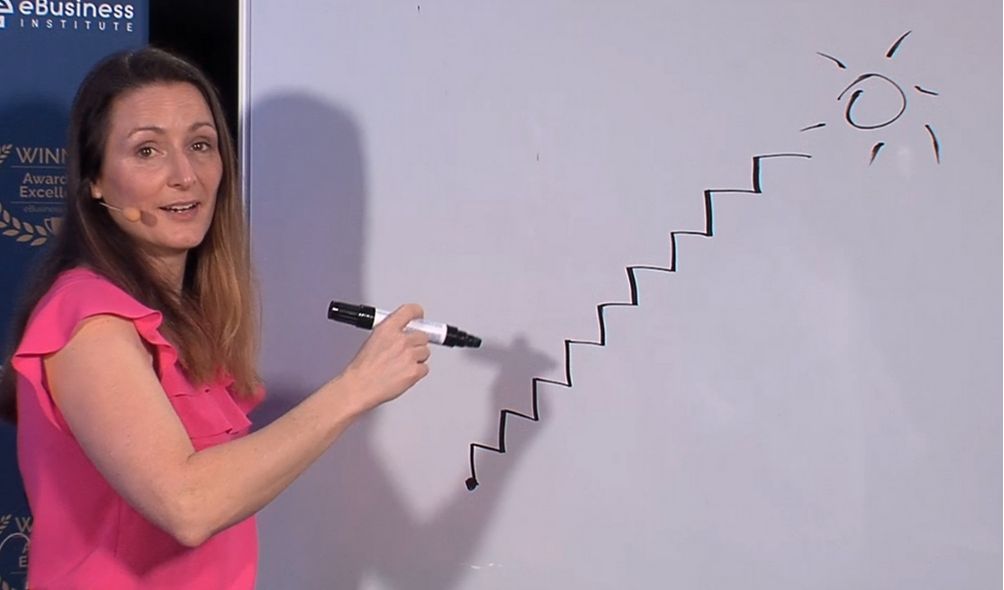
Why It’s Important to Diversify When Building Content Websites
Matt: Your plan now is talking of going to those steps. As you build these portfolios, is your plan to hold those websites for the cashflow and the asset value? Or are you going to be selling? Of your 25 sites, will you selectively sell them off? What’s the overall exit plan?
Ewen: Beyond the niche selection process, my role as the head is the capital allocator. It’s about making the decisions on what to do with capital and how to mitigate risk.
This is why we do the portfolio approach because its portfolio theory. Some sites are going up, some sites are going down. With every Google update, I don’t lose sleep anymore because I know some sites went down. I know some sites went up. So, I don’t care. They all shake out in the wash.
Eventually, if I look at the year-on-year numbers, it’s 50% growth, 100%, 150% growth. It’s the same story every year. But, if you tried to pick the winners individually, you would drive yourself nuts because that can be very nauseating.
The goal right now is to really leverage what we have as far as we can. And I think my macro thesis is that there’s a whole lot of lifestyle entrepreneurs and micro-operators like myself.
There’s a whole lot of huge media companies and big players in Amazon, FBA and other e-commerce trends (e.g., SaaS), that are trying to get into the content game from the top. But there’s very few folks in the middle. So, I see my role as filling that gap in the middle.
How to Reinvest Your Website Profits to Grow Your Portfolio Faster
Ewen: To your point of, do we sell, do we buy? Strategically, when we do this portfolio with our financial modelling, we build out to exit 20% – 30% of the sites, every 2-3 years. We then use those proceeds to launch more sites.
Let’s say we have a 10-site portfolio. I’ll give you an example… We launched a portfolio of 10 sites for $250,000, around 2-3 years ago. This was our first experiment. A little over two years later, the portfolio has exceeded $500,000 in asset value.
That was our first go around using the asset value. And then we can say, “Look, we can sell one or two of these more mature sites, let’s say for $300,000, $400,000, $500,000 and still have some of the other ones that are earning income.”
This way, you’re not going to zero and starting from scratch. You have this base and then you can launch 10 or 20 more sites, and then do that all over again.
If you do that at scale, you build that Excel spreadsheet way out into the future. You can see how the compounding nature at multiple levels works out over time. But I do believe that you should cycle in and out of some percentage of your holdings as a risk mitigation method. And ideally, you either double down with more sites, or you take that risk off (or some of that risk off) the table completely.
Just say, “You know what? I’m going to pocket that and put it in something boring like real estate.” That’s the best way to mitigate risk, is to cash out at some point. Not everything, but some portion of it.
Growing Your Portfolio Faster Buying Smaller Websites for Profit
Matt: In general, you’re a long-term buy and hold. Would you still look to buy websites, or not so much?
Ewen: I would say we’re very interested in micro acquisitions, so anything under a $100,000.
I feel like we can leverage content on that. Ideally, it’s an aged site that has some good content on it, and a wide-open niche. We can double down and produce 200 articles and get a net positive ROI on those.
I think in terms of a larger acquisition, it would have to be like right in our playing field. We have proven content expertise in the vertical, with writers ready to go. I’ve done the keyword research, and I know it’s a good vertical.
I would want to know we have the monetization partners lined up and ideally, there’s some quick wins. Like we can switch an affiliate or move from Ezoic to Mediavine etc.
So yes, I would go bigger. But it would have to be a perfect site, if that makes sense.
Matt: Awesome. Well, thank you so much for your time today. It’s just been unreal.
Ewen’s Final Advice for Newbies Who Are Looking at Building Content Websites
Matt: For those readers who are out there, who are just starting out on their journey. Ewen, when you look back over your own journey, from starting in those Starbucks days on the way to work, do you have a final bit of advice that you could give to someone starting out? Or something key that you’ve learned over that time?
Ewen: I would just say the consistency really pays off. If you just take a little bit of steady action every day, every week, whatever the cadence is, and just keep at it. There are no quick wins here. There are no shortcuts. You have to get into the arena and get some reps.
And I would also say, just do that approach of Fire Bullets then Cannonballs. You can do it on a micro level. Even if you have just one site, here’s an example of how to do this.
Just say you have a pet site and you publish articles in 4-5 different categories. But all of a sudden, you discover that you’re ranking number 1 for dog collars. Well, then you’d take your capital, and rather than spread it wide first, instead you’d go deep into collars, e.g., other dog collars, different variations etc. You would really own that vertical if the data is telling you there’s something there.
And so, I think just internalize that, because it can be very easy getting distracted. I’m one to talk, because we have over 100 websites!
But we’ve done it. I’ve tried to do it in a more disciplined way where we’re not chasing things. We’re listening and collecting feedback on what do we have? What is the asset we have today and what is it telling us about where we should publish our next article?
Matt: Awesome. Thank you so much for that Ewen, that’s perfect. Thank you so much for being with us today.
Ewen: Oh, great to be here. Thanks so much.
